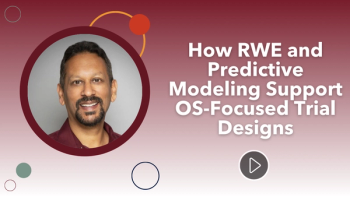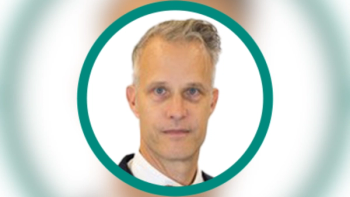
Cardiovascular and Metabolic Studies Emphasize Innovative Advancements, Patient Centricity, and RWE
Karen Hill and Heather Fitzpatrick Medlin discuss the recent advancements and challenges in cardiovascular and metabolic studies, as well as strategies to address current obstacles and advance the industry further.
The CRO industry is continuallyworking to improve research strategy and progress in the field, especially when it comes to cardiovascular and metabolic diseases.Karen Hill, senior vice president of Global Project Management, cardiovascular and metabolic at Worldwide Clinical Trials, and Heather Fitzpatrick Medlin, MSW, therapeutic strategy lead and real-world evidence leader at Worldwide Clinical Trials, will discuss the recent advancements and challenges in cardiovascular and metabolic studies, as well as strategies that involve the incorporation of real-world evidence and patient centricity, to address current obstacles and advance the industry further.
Moe Alsumidaie: What are the most recent innovative advancements in cardiovascular and metabolic diseases?
Karen Hill: Recently, I have seen continued progress in lipid-lowering and the involvement of monoclonal
antibody therapies. There have been studies that indicate, from an LDL perspective, these new therapies have a
continued improved impact on lowering LDL levels. Additionally, drug administration is improving, as these new
treatments are administeredsubcutaneously and people do not have to take tablets each day. These new therapies
also extend the time between treatmentand how often they are applied, so patients, potentially only have to go in twice a year to receive treatment. Additionally, I have seen some improvements in heart failure, but we have a long way to go. The other area where we have seen advancements is in anticoagulants, where we are not only looking at patients with cardiac disease, but also the complications associated with hospitalizations, including stroke and peripheral arterial disease.
MA: Why are we looking at this new area, and what are the benefits of these new drugs?
Heather Medlin: With the 21st Century Cures Act, we are focusing on the impact ofpayers, as well as the burden
on the caregiver and the patient. We are scoping out ways in which we can support patients to keep them healthier longer, out of hospitals and ensure they can live a higher quality of life. Thishas a substantial financial impact because patients are not putting a burden on the healthcare system, and is becoming part of the way we are running studies. We are examining data from different sources in real time. With new technologies like wearables, we can get a better picture of what is going on with the whole patient, not just the indication we are focusing on in research.
MA: Are there specific challenges that the industry is currently facing? How can sponsors best address these challenges?
KH: The biggest challenge is the cost of these programs. It is difficult to show a benefit without having to do extensivestudies. Thisis where the use of real-world evidence can come toplay a significantrole and be incorporated early on. Technology is another area that we have to embrace. We still have not, as an industry, utilized that aspect to make studies much more cost effective.
HM:Additionally, there are also many new regulations that are being released by health authorities. How do we implement those into clinical trials, as well as the real-world setting, to ensure that we are collecting the right data and getting an accurate picture? Medicine and treatment guidelines change so quickly that you have to be flexible to integrate that into the data you are currently collecting. It could be very different for each patient, especially for studies that run over a few years.
MA: Can you share best strategies necessary for designing some of those protocols in cardiovascular and metabolic studies?
KH: On the CRO side, we need to be more involved in helping sponsors design their study based on a risk-based approach. Again, looking at technology early on and using it to take away some of the other data that we are collecting more traditionally, as well as not duplicating efforts. We may not need to do the outcome work later if we build in real-world evidence techniques during the full development program. We are even using those patients who do not go into studies and are putting them into other studies.
HM: Absolutely. Individuals who may not be good candidates for the clinical studies are going to be the ones purchasing or being dispensedthese products. We can focus on collecting information for patients who are not candidates, so we get an excellent portrait of what patients with this disease look like.
KH: I recently attended a conference where they discussed the 21st Century Cures Act and the implications we face due to the size of cardiovascular and metabolic studies. We know that academic groups within the cardiovascular and metabolic therapeutic arena are taking this seriously. Within the cardiovascular field, this can make a difference if we can take the guidelines and put them into real term practices. We do an excellent job of acknowledging these guidelines, but we are not putting them into practice as quickly as we should.
MA: Is patient centricity being incorporated in this sense, with protocol design, for instance?
HM: Yes. Not only are we seeing studies mature with technology, but also that subjects and their caregivers are savvier about using technology in studies. They have a clear understanding of what they expect to get out of a clinical study. Then, we need to recognize the stakeholders that ensure research goes to where we want it to go, look at the patient as the center of this, and ensure that we minimize the burden on patients to participate. We could even involve patient advocacy groups to support the research and providethat data collected in clinical trials back to those who participatedor are interested.
KH: At the same conference I attended, patients were a part of the discussion panels, and they gave their advice to clinicians and regulators. This meeting also had the FDA and NIH there. Within all therapeutic areas, it is a lot more focused on what the patients feel. They are savvier about coming into clinical research because they know how important they are for the future and themselves.
MA: How is real-world data being leveraged to improve research strategy and drive advancements for cardiometabolic diseases?
HM: The power in the data is understanding where we have been and the evidence we have collected previously. You can look at the significance of what we have collectedin other places and use it to streamline the information we are looking to collect. There is a multitude of data out there to reference back to and look for trends. As a complement to clinical research, it helps us tell an all-encompassing story about the patient, their disease and the desire for a cure.
Newsletter
Stay current in clinical research with Applied Clinical Trials, providing expert insights, regulatory updates, and practical strategies for successful clinical trial design and execution.




